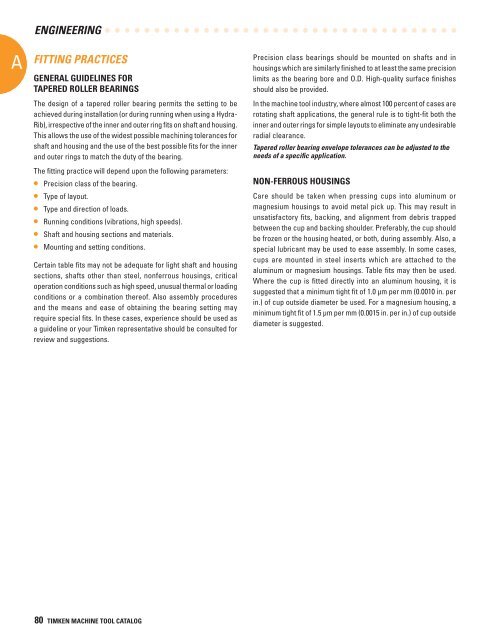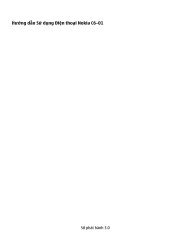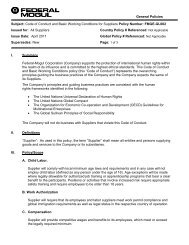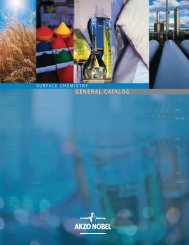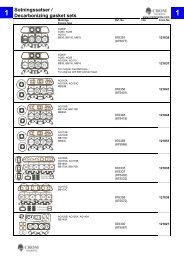Create successful ePaper yourself
Turn your PDF publications into a flip-book with our unique Google optimized e-Paper software.
A<br />
ENGINEERING<br />
FITTING PRACTICES<br />
GENERAL GUIDELINES FOR<br />
TAPERED ROLLER BEARINGS<br />
The design of a tapered roller bearing permits the setting to be<br />
achieved during installation (or during running when using a Hydra-<br />
Rib), irrespective of the inner and outer ring fits on shaft and housing.<br />
This allows the use of the widest possible machining tolerances <strong>for</strong><br />
shaft and housing and the use of the best possible fits <strong>for</strong> the inner<br />
and outer rings to match the duty of the bearing.<br />
The fitting practice will depend upon the following parameters:<br />
• <strong>Precision</strong> class of the bearing.<br />
• Type of layout.<br />
• Type and direction of loads.<br />
• Running conditions (vibrations, high speeds).<br />
• Shaft and housing sections and materials.<br />
• Mounting and setting conditions.<br />
Certain table fits may not be adequate <strong>for</strong> light shaft and housing<br />
sections, shafts other than steel, nonferrous housings, critical<br />
operation conditions such as high speed, unusual thermal or loading<br />
conditions or a combination thereof. Also assembly procedures<br />
and the means and ease of obtaining the bearing setting may<br />
require special fits. In these cases, experience should be used as<br />
a guideline or your <strong>Timken</strong> representative should be consulted <strong>for</strong><br />
review and suggestions.<br />
<strong>Precision</strong> class bearings should be mounted on shafts and in<br />
housings which are similarly finished to at least the same precision<br />
limits as the bearing bore and O.D. High-quality surface finishes<br />
should also be provided.<br />
In the machine tool industry, where almost 100 percent of cases are<br />
rotating shaft applications, the general rule is to tight-fit both the<br />
inner and outer rings <strong>for</strong> simple layouts to eliminate any undesirable<br />
radial clearance.<br />
Tapered roller bearing envelope tolerances can be adjusted to the<br />
needs of a specific application.<br />
NON-FERROUS HOUSINGS<br />
Care should be taken when pressing cups into aluminum or<br />
magnesium housings to avoid metal pick up. This may result in<br />
unsatisfactory fits, backing, and alignment from debris trapped<br />
between the cup and backing shoulder. Preferably, the cup should<br />
be frozen or the housing heated, or both, during assembly. Also, a<br />
special lubricant may be used to ease assembly. In some cases,<br />
cups are mounted in steel inserts which are attached to the<br />
aluminum or magnesium housings. Table fits may then be used.<br />
Where the cup is fitted directly into an aluminum housing, it is<br />
suggested that a minimum tight fit of 1.0 μm per mm (0.0010 in. per<br />
in.) of cup outside diameter be used. For a magnesium housing, a<br />
minimum tight fit of 1.5 μm per mm (0.0015 in. per in.) of cup outside<br />
diameter is suggested.<br />
80 TIMKEN MACHINE TOOL CATALOG


